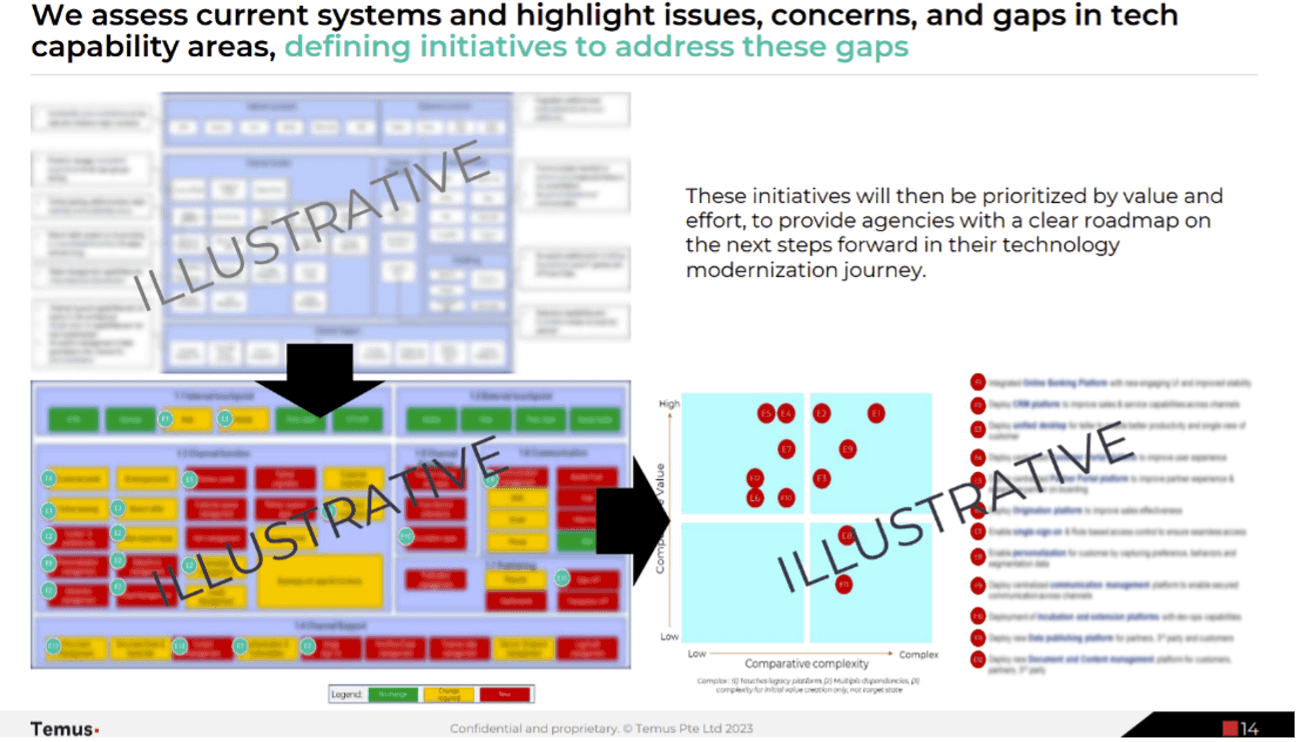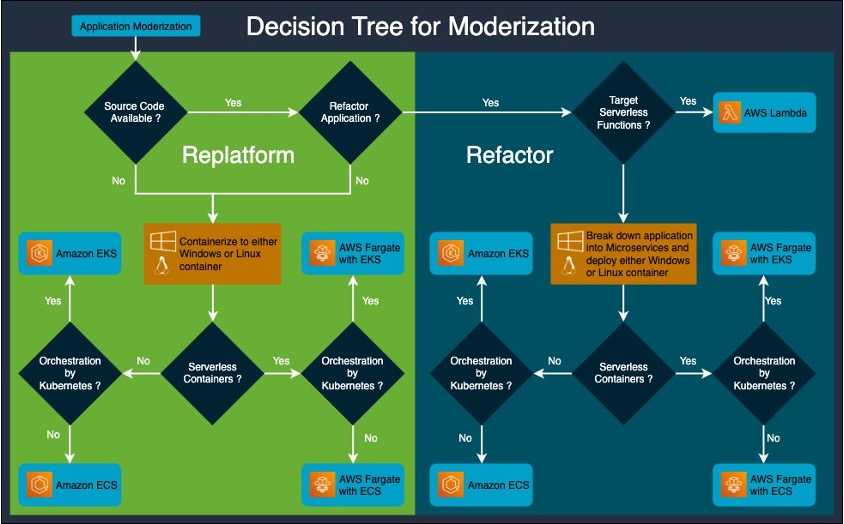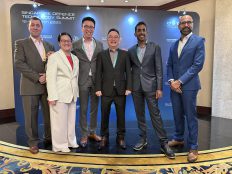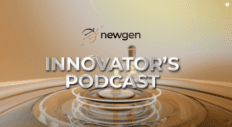Summary
- Product innovation still takes a long time with legacy applications still in place.
- Costs have increased because cloud auto scaling is not leveraged.
- Digital disruptors are innovating using cloud native functionality provided by hyper scalers.
Temus and Amazon Web Services (AWS) have created the Cloud Value Realisation (CVR) framework to solve these challenges. A key tenet of CVR ensures digital transformation efforts are driven by business objectives such as: increasing customer satisfaction, adding new customers, increasing revenues, and reducing costs. CVR incorporates Agile methodologies to deliver a Minimum Viable Product (MVP) within a few sprints instead of a big bang, multi-year, transformation exercise. This provides a unique solution that generates business benefits while modernising complex legacy applications.
CVR proposes two options: replatforming and refactoring to accomplish these objectives and deliver business value. It is recommended to leverage AWS tools and managed services to accelerate the journey and rapidly create business value. This results in building a cloud native infrastructure leveraging containers, DevSecOps, agile methodologies, and fast implementation of new business innovations. This allows businesses to rapidly innovate and compete against the digital native disrupters to grow business using latest technologies.
Digital Transformation Drivers
- Digital disruptors are challenging large enterprises by leveraging open-source technologies to build highly scalable systems at low cost. Digital-native startups used their software-building expertise to gain competitive advantage.
- Enterprises want to build their own digital platforms using a cloud-native approach to prevent digital disruptors an entry into the market.
- Consumerisation of the user experience from smart phones/ digital devices have led enterprise users to expect the same look-and-feel as new digital applications while using traditional ERP and other backend applications. This has put pressure on technology executives to upgrade the user experience of legacy business applications.
These trends have created unique opportunities for CIOs/ CTOs to rapidly modernise legacy applications and leverage the power of cloud. The main objectives of technology executives are to modernise existing monolithic and inflexible business applications using concepts of digital native, cloud, agility, micro-services, open source, and create a rich user experience.
Digital Transformation Journey and Challenges
- Lift and Shift applications to cloud (lowest technical complexity and fastest result)
- Hollow out the core by selectively extracting critical functions from the core using a strangulation pattern (medium technical complexity and can provide faster results to business)
- Rearchitect and re-develop core applications into a microservices architecture (highest technical complexity with multi-year transformation journey)
A significant number of technology executives have taken the path of least resistance and embarked on a Lift and Shift approach. Existing applications are directly moved into cloud environments without assessing whether digital transformation benefits are accrued to the organisations. Over the last 3 years, this has resulted in cloud environments running legacy applications leading to following challenges:
- The business is frustrated because new product innovations are not delivered rapidly and time-to-market is very slow. This is because IT is still hampered by legacy architecture and processes preventing the release of new functionalities in a few sprints.
- Costs have increased instead of reduced because the power of cloud scaling is not leveraged in Lift and Shift.
- Digital native competitors are winning more customers because they are born digital and their entire business process leverages the best solutions offered by hyper scalers.
The Road Ahead
Temus’s Cloud Value Realisation framework enables executives to transform legacy applications faster and provides business value even while the transformation is in progress. This allows enterprises to compete by leveraging the power of AWS managed services and new innovations thereby accelerating business growth.
— Rajesh Rao, Managing Director, Technology, Temus
CVR starts with an assessment of legacy applications using a robust framework. It leverages Amazon Web Services (AWS) Migration Hub Strategy Recommendations (MHSR) to understand all applications in the enterprise. Enterprises normally have multiple silo applications in different departments to perform the same business functionality. A key aspect in an assessment is to consolidate the number of applications and rationalise the portfolio. Temus has witnessed application portfolios shrink by 40-50% after carrying out the assessment and rationalisation exercise.
The next step is to categorise applications based on various criteria such as ease of modernisation, business benefits generated and other criteria jointly defined before assessment. The Desirability, Viability, Feasibility (DVF) framework (Figure 1) is used in this exercise to derive a prioritisation matrix outlined below.

This is combined with the AWS 7R (Re-host, Re-platform, Re-factor/Re-architect, Re-purchase, Relocate, Retire and Retain) model to determine what should happen to various applications and identify the timeline for application modernisation.A core part of CVR is to build a digital native infrastructure consisting of cloud, containers, DevSecOps, pipelines, automation, and Day 2 Run operations. Customers are very closely involved in this journey and can support management of the digital native infrastructure to prevent lock-in.CVR leverages Agile sprints to execute the modernisation and deliver a modern cloud native architecture. This leads to higher business agility and innovation by using new technologies developed by the cloud native ecosystem.
Modernisation Pathways

Not all businesses have access to the source code needed for re-factoring. In such cases, you can re-platform applications onto containers using AWS’ fully managed container services such as Amazon Elastic Container Service (Amazon ECS) and Amazon Elastic Kubernetes Service (Amazon EKS). On the other hand, if you have access to the source code, you can re-factor your application code and run it on containers using the same container services like Amazon ECS and Amazon EKS, or run it on serverless services like AWS Lambda.
Replatforming Applications to Containers
According to CNCF’s report, 96% of organisations are either assessing or already utilising containers to modernise their infrastructure. The adoption of containers by customers is driven by the benefits of reduced risk, increased operational efficiency, faster deployment, and enhanced agility. Leveraging containers can also help in reducing the expenses associated with licensing (i.e. Windows) by consolidating servers and making more efficient use of computing resources.Re-platforming your applications as containers will help you achieve your business objectives with less effort than re-factoring. AWS App2Container (A2C) can help to containerise applications to containers quickly. It is a command line tool to analyse .NET and Java applications, and generate a container image automatically with the necessary dependencies, network configurations, and deployment instructions. Furthermore, A2C does not require accessing source code for the application, enabling the containerisation of third-party and commercial off-the-shelf (COTS) applications.AWS offers two container orchestration services to deploy containerised applications: Amazon ECS for running and managing applications built using Docker containers, and Amazon EKS for running and managing Kubernetes applications on AWS. AWS Fargate is a serverless compute service that can power both Amazon EKS and Amazon ECS applications.With A2C, it also creates CI/CD pipelines for Amazon DevOps services like AWS CodeBuild and AWS CodeDeploy for building and deploying containers. With CI/CD tools such as Azure DevOps and Jenkins, you can integrate A2C provided artifacts (e.g. dockerfiles, Amazon ECS task definitions, and Amazon EKS deployment YAML files) into your existing workflows.
Re-factoring Monolith Applications to Microservices
Developing and setting up the infrastructure required for application re-factoring can be both expensive and time consuming. That’s where AWS Migration Hub Refactor Spaces can help. It is specifically designed to assist customers in incrementally refactoring their existing applications, thereby enhancing business agility and reducing time-to-market.The Strangler Fig pattern, introduced by Martin Fowler, is a design pattern used in software development to refactor monolithic applications to microservices-based architecture. This is based on the concept of a strangler fig tree, which is a type of tree that grows around another tree and eventually takes over it.AWS Migration Hub Refactor Spaces adopts facilitate this strangler fig pattern to refactor monolithic applications to microservices-based architecture. It works by orchestrating Amazon API Gateway, API Gateway VPC links, Network Load Balancer, and resource-based AWS Identity and Access Management (IAM) policies so that you can transparently add new services to the application’s HTTP endpoint.If your application is running on .NET framework, AWS Microservice Extractor for .NET can help simplify the process of refactoring applications into smaller code projects to build a microservices-based architecture. It provides an assistive tool which analyses source code and runtime metrics of your target application, and creates a visual representation of your application and its dependencies. Microservice Extractor provides automated recommendations for microservice extraction based on machine learning. This guided experience helps the developer to speed up refactoring large applications even if the developer is unfamiliar with the codebase. The Microservice Extractor extracts functionality groups within the application as separate code projects that teams can develop, build, deploy, and operate independently to improve agility, uptime, and scalability.There are also other tools like Porting Assistant for .NET and AWS Toolkit for .NET Refactoring that can help port .NET framework applications to modern .NET (.NET Core) where customers can take advantage of the performance, cost savings, and robust ecosystem of Linux. Refactoring .NET Framework applications to cross-platform .NET Core on Linux brings multiple benefits to businesses, which include saving Windows licensing costs, reducing container image size, faster startup time and gaining access to the latest advancements from the .NET community.
Another choice for building microservices-based architecture in the cloud is serverless functions. AWS Lambda lets you run code without the need for provisioning or managing servers. You can break down your application down into small, independent functions that can be deployed and scaled individually as needed. Unlike containers, Lambda functions do not run continuously and only incur charges when the functions are actively processing requests, making it a cost-effective solution for running microservices at scale. Additionally, Lambda functions can be easily integrated with other AWS services, making it simple to build complex, distributed applications.
Conclusion
4 steps to realising cloud modernisation
- Identify legacy workload
- Cloud Value Realization (CVR) framework to collect business and technical needs
- Identify modernization pathway: re-platforming or re-factoring
- Evaluate select modernization tools: AWS App2Container, AWS Migration Hub Refactor Spaces, AWS Microservice Extractor for .NET, Porting Assistant for .NET and AWS Toolkit for .NET Refactoring
Engage with Temus to learn more about our Modernization Programme to help accelerate your digital transformation journey.




